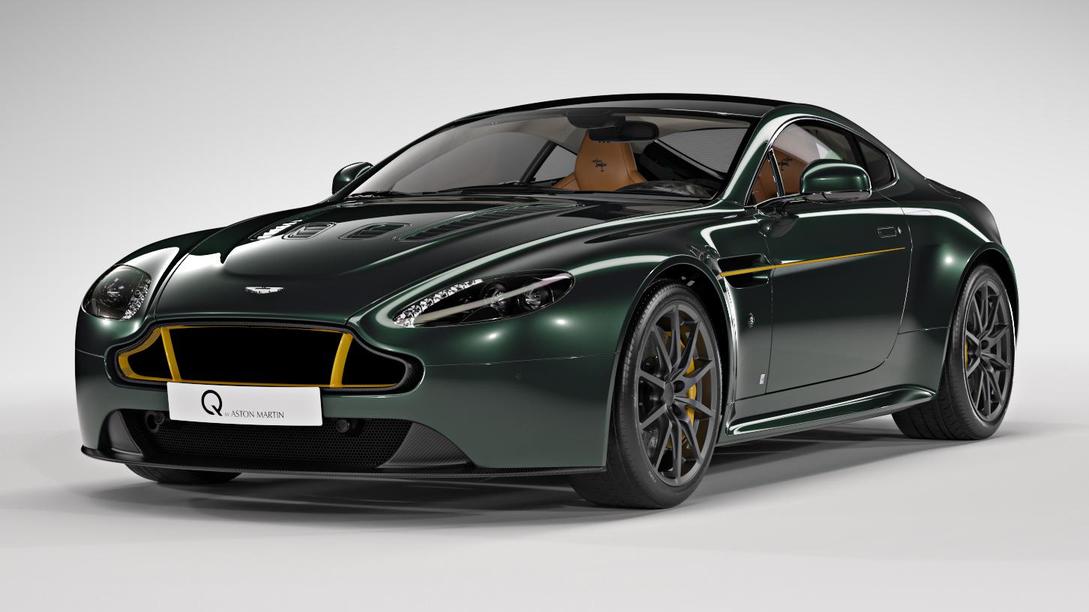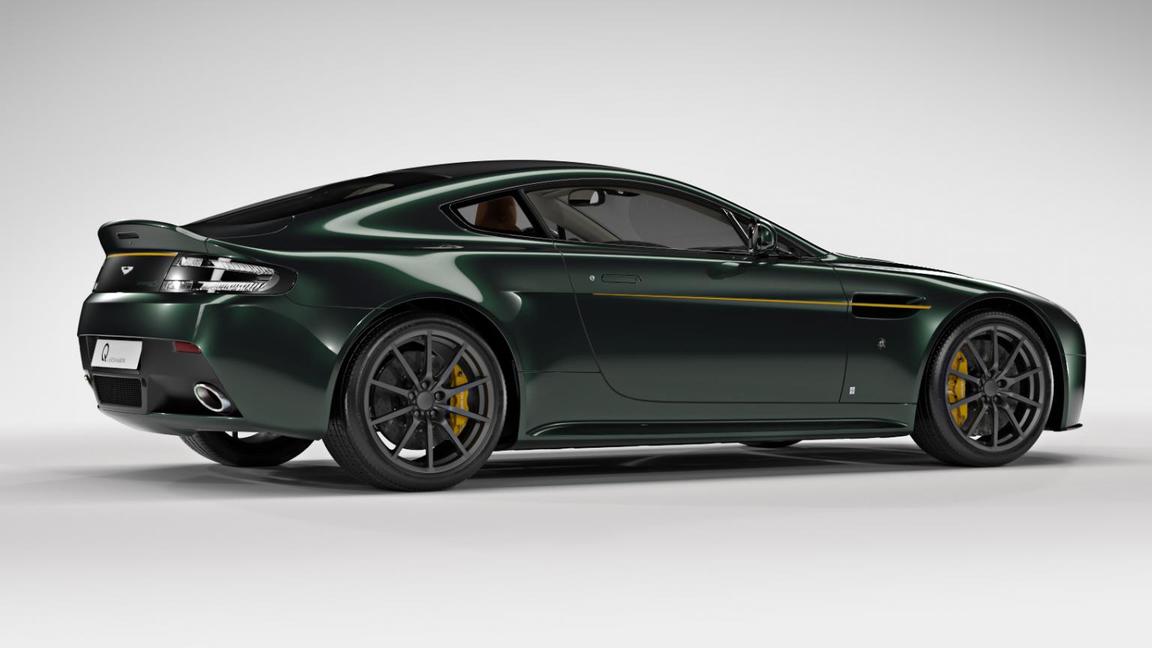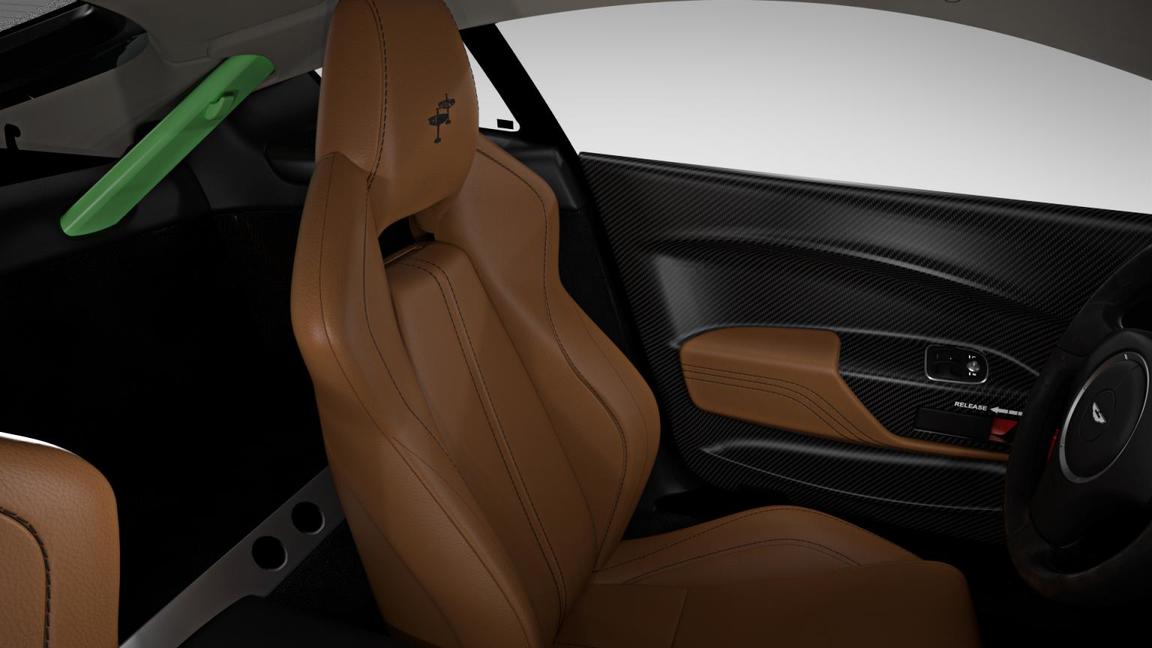In March 1936, the Supermarine Spitfire took to the air for the first time. The legendary British combat aircraft would prove integral to the Allies’ victory in WWII, employing a potent mixture of devastating firepower and pure speed to dominate the skies. Eighty years later, Aston Martin is paying tribute.
The brand’s Q division has developed a special version of the Vantage called the V12 Vantage S Spitfire 80 Edition. Inspired by the plane that helped win the Battle of Britain, the vehicle wears a variety of Royal Air Force livery, including Duxford Green Pearlescent paint and the Spitfire’s trademark yellow pinstripes. The theme continues inside the car with a myriad of accents, such as stitched “Spitfire 80” logos, an aviation-style door release, and an aluminum finishing strip meant to resemble the Spitfire’s rear strut brace. Better yet, owners of the car will receive a unique Irvin flying jacket stitched with the Spitfire 80 logo, as well as an Irvin flying helmet and goggles.
Because it has “Spitfire” in its name, the Aston’s performance had to be excellent. Luckily, it’s based on the V12 Vantage S — the automaker’s quickest production road car ever — so speed is no problem. The vehicle is equipped with a 6.0-liter V12 producing a thundering 563 horsepower and 457 pound-feet of torque. It’s not quite as burly as the 2,340hp Rolls-Royce Griffon engine that powered Spitfires toward the end of the war, but with a 0 to 60 mph time of just 3.7 seconds, the Aston is more than quick enough for land-based missions.
The Spitfire 80 Edition includes eight vehicles that will be sold exclusively from Aston Martin’s Cambridge dealership. The cost for each is 180,000 British pounds, or $236,565 U.S. Each lucky buyer will be treated to a special handover ceremony, which includes an aerial display, an armored vehicle drive, and a chance to drive their new ride on Imperial War Museum Duxford’s historic runway. The cars are scheduled for delivery on October 18.






